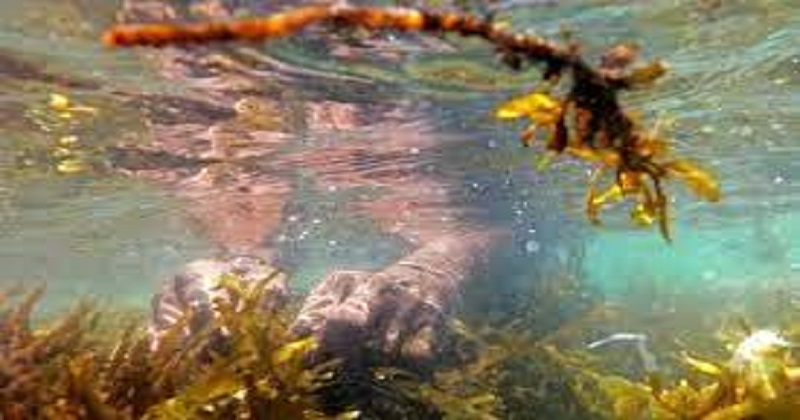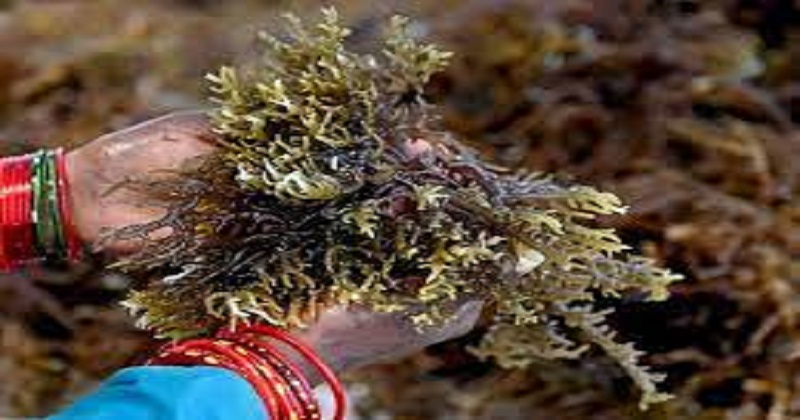
Lakshmi Murgesan, dressed in a colorful saree and shirt, dives into the azure waters off India’s southern coast to collect seaweed, which scientists call a miracle crop that can absorb more carbon dioxide than trees. As the world’s third-largest carbon polluter, after China and the US, India has not set a date for reaching net-zero emissions. However, authorities are studying whether seaweed farming can reduce greenhouse gas emissions, reverse ocean acidification, and improve the marine environment, as well as provide a sustainable livelihood for marginalized coastal communities.
‘I am doing this for my children… It requires a lot of hard work, but I am able to earn good profits from about four months of work,’ said Murgesan, who makes 20,000 rupees ($265) each month farming the fibrous macroalgae. I would not have been able to educate my children but after doing this,
The government marine scientist, M. Ganesan, noted that coastal habitats and wetlands absorb five times more carbon than terrestrial forests. Ganesan told AFP that it is a miracle crop in many ways: it is eco-friendly, it doesn’t use land and freshwater, it absorbs carbon dioxide dissolved in water during photosynthesis, and it oxygenates the entire marine ecosystem. With an 8,000-kilometre (5,000-mile) coastline, India now aims to boost production from the current 30,000 tons to more than one million tons by 2025. The seaweed market was worth $12 billion in 2019 and is expected to reach $26 billion by 2025, with China and Indonesia holding 80 percent of the market share.

A team of women works together to cultivate seaweed fronds on bamboo rafts, then harvest and dry them. Murgesan is part of this group. ‘Tamil Nadu’s tropical waters create an ideal environment for fishing — with one raft yielding up to 200 kilos (440 pounds) in about 45 days. Through AquAgri, a company that promotes algal cultivation in India, the product is sold in markets nationwide, as well as in the US and Australia. Seaweed is commonly used in East and South East Asian cuisine, as well as medicine, cosmetics, bio-fertilizer, and fuel. It is also used as an ingredient in meat and food processing,’ Abhiram Seth, managing director of AquAgri, told AFP. While not traditional in India, in July the government announced some $85 million in subsidies for seaweed farming initiatives over the next five years.
Japan, China, Indonesia and the Philippines already cultivate seaweed. The Australian government has announced a plan to develop a $100 million industry by 2025. Both the environment and farmers like Murgesan could benefit from this project, Seth said. Neither fertilizer, freshwater, nor pesticides are needed to grow seaweed. Kelp grows at a rate of 61cm (two feet) a day, one of the most commonly farmed types. According to a recent paper published in Nature Geosciences, they absorb 173 million metric tons of carbon annually. A recent study conducted by the University of California found that mixing red seaweed into animal feed could reduce methane emissions.
Read more: Early use of social media can result in problematic online behavior: Reports
However, scientists warn that farming can have drawbacks. ‘Overharvesting seaweed has drawbacks as it forms the food for many animals living on the reef, like sea urchins and fish,” said Naveen Namboothri, of the Dakshin Foundation, adding that the operation may damage the coral reef. Because of these risks, Murgesan and the other farmers only work 12 days a month and do not harvest during the main fish breeding season, between April and June. Although the women are always at risk of getting hurt by the rocky sea bed or stung by jellyfish, they appeared undaunted. They laughed and chatted away their worries.

Post Your Comments